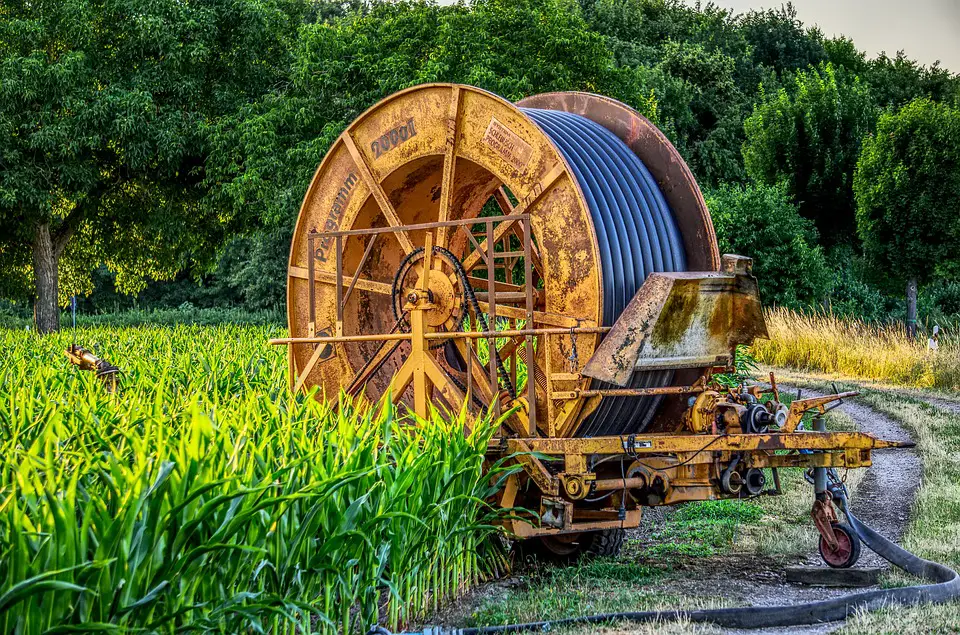The long, snake-like hose pipe has fulfilled its purpose. It now lays lifeless on the ground awaiting you to wind it and store it safely. I won’t lie to you, if you don’t have a hose reel, that’s a hell-some task. You won’t only get tired but might also end up damaging your hose.
A hose reel is a spinning cylindrical spindle used for storing hose pipes. It will get the job done. To use a hose reel, you’re simply required to pull a pipe or turn a handle. Sounds easy, huh? Well, not always the case. The reel you use will dictate that.
If it’s a manual one, brace your muscles for work.The drum will only revolve when you turn a handle -that can require much energy- attached to it.
A spring reel will spare your muscles a little. It uses a spring system. When you pull the hose out, tension builds up on a spring. You will lock the spring once you achieve the desired length. When the job is done, the spring will retract and automatically recoil the hose pipe.
Powered reels are the most effective. The drum is spun using electricity, air, or water. Uncoiling or coiling the pipe is effortless. They are powerful reels that are mostly used in industries.
Hose reels also differ in portability. Some of them have wheels, and it’s easy to push them to the garden. Others are box-like without any wheels, which means you carry them around. You can place them anywhere imaginable. The last category is wall-mounted. You affix them on a wall using screws, thus saving up space.
This article is for you if you’ve been stuck, not knowing how to use a hose reel.
How to use a hose reel
Before you begin using your reel, the hosepipe has to be correctly set up. For this to happen, the following should match the structure of the reel:
Length of the pipe: If the pipe is too long for the reel, it might get kinked or crack and develop leaking problems. To avoid this, cut it to the appropriate length. Be sure to cut well. The end that you will attach to the hose nozzle should be sharply cut.
The thickness of the pipe: A thicker pipe calls for a bigger reel. You might still shorten it, but that limits you. Thinner tubes are the most ideal when using reels.
It is also important to note that hose reels don’t work well with low water pressure. To achieve high pressure, mount, or place your reel on a raised place.
Place your hose reel near a faucet and next to your garden. This is important, especially for a wall-mounted reel. It will save you from the tiresome unmounting and mounting every time. Be sure to also keep your reel in a safe place away from any damages.
Extra tips on how to use a hose reel.
If your reel is manual, turn the handle anticlockwise to start ejecting the pipe.This requires power. However, do it carefully lest you want to spoil the pipe.
To make this easier, use one hand to turn and the other to pull out the pipe. Spinning will get smooth as the spindle gains momentum. After spinning for a while, stretch the hose out to avoid possible kinks. Turn the handle while stretching the pipe until you reach your desired length. Then, slowly spin clockwise to retract your hose.
TIP
- Always use your hand. Using your foot to exert pressure on the handle may break it, incurring extra costs and wasting your time.
For a spring reel, you are only required to pull. Again, to avoid damaging the pipe, don’t use extreme force. The spring is sensitive. Exerting too much pressure may damage the entire spring system, taking away the whole point of a spring reel.
Pull continuously without taking a break. If you need a breather, lock the spring first. Otherwise, the hose will be pulled inside and take you back to square one.
Walk with the pipe as you pull out to keep it from twisting. Pull to the targeted height and engage the lock.
Once you are done, disengage the lock and let the spring do its job.
Sometimes, the pipe might resist pulling, or the handle repel turning. This happens when a part of the pipe is wound erroneously on the drum. Turn the handle in the opposite direction or slightly push the pipe in. Pull out slowly to remove the overlap.
If this doesn’t work, you’ll have to extend the whole hose outside to check for any kinks. This might require more muscle. Do the same if the pipe can’t get retracted. If that doesn’t work, check whether the feeder is spinning evenly. If it’s not, then you will need to reposition the feeder arm.
To avoid overlaps, always watch the re-coiling to make sure the pipe winds itself well. Particles of soil and attached mud may also cause trouble. Wipe them out using a wet piece of cloth.
If you want your reel and pipe to last long, store them well. It will help if you avoid exposing the hose reel to direct sunlight. The toxic ultra-violet sun rays can crack the outer covering of the pipe. Also, since the pipe has an inner metallic lining, exposure to excess heat may expand the metal and result in internal leaks.
After usage, always recoil the hose.
When placing the hose reel on the ground, release it gently. You don’t want to disorient the internal elements and have problems with retraction.
Conclusion
Hose reels are great tools that will ease your gardening work. Luckily, their usage is straight forward. Though made of metal and hard elements, they can as well be delicate. Handle them with care, and they will serve you for a long time. Use carelessly, and your reel won’t even last a year.
Also check
How to mow a hill with a self-propelled mower





